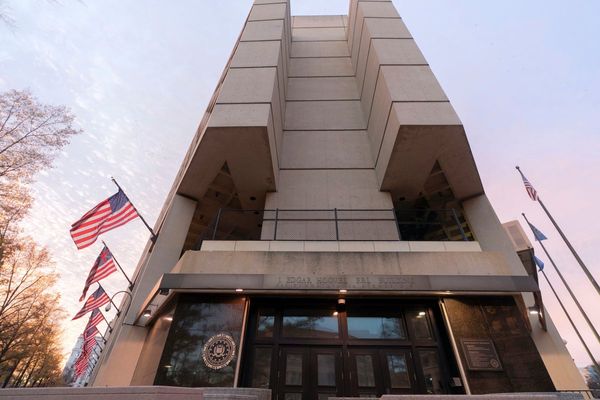The collapse in the personal U.S. saving rate to near a record low has fueled a narrative that consumers are clearly strapped heading into 2023. This is worrisome because consumer spending accounts for about two thirds of the economy. Heck, one widely shared analysis by Federal Reserve analysts estimated that by this past June, households had run through half the savings buffer built up during the pandemic.
But it could it be possible that the saving rate is sending a misleading message? Or at least not telling the whole story? The more important figure might be how much of a cash buffer households have on hand. Here, the signal is more reassuring. According to the Fed’s quarterly Flow of Funds that was just released, checkable deposits for households and nonprofit organizations – our best proxy for cash-on-hand – rose to a record $5.12 trillion at the end of the third quarter, rising from $4.28 trillion at the end of 2021. To understand just how big that figure is, consider that checkable deposits were only about $1.2 trillion heading into the pandemic, after peaking at $1.43 trillion in 2018.
What’s stands out is that the saving rate and checkable deposits largely told the same story up until the first quarter of this year. Analysis using the personal saving rate pegged excess savings, or the amount of savings above what would be normally expected, at $2.2 trillion early in the year. Checkable deposits, meanwhile, were about $2.4 trillion above the expected level based on the pre-pandemic trend. It’s only over the last two quarters that the two measures have diverged sharply. Excess savings have fallen by some $500 billion while checkable deposits have expanded by more than $800 billion. This leads to a few ideas as to what might be going on with the data.
The first is that the data used to compile the savings rate is simply misleading. The savings rate is estimated as a part of the same government analysis that produces the gross domestic product report. The GDP report showed that the economy had contracted in the first two quarters of 2022, which meets the technical – though unofficial - definition of a recession. But the main measures, such as job growth, manufacturing output and retail sales, showed continued strength. So, the official score keeper on recessions, the National Bureau of Economic Research, declined to designate one. If the GDP data was an outlier — possibly due to the effect of shipping delays on estimated imports and exports – then it stands to reason that the savings rate estimation may have been skewed as well.
The second is that checkable deposits rose because households were cashing out of stocks and bonds during a horrible year for both assets. Indeed, the same Fed report on household wealth indicated that total holdings of corporate equities and mutual funds fell by a whopping $11 trillion over the first three quarters of this year. Of course, it’s impossible to tell how much of that decline is a result of households getting out of the markets versus a decline in values for those who remained invested, but it’s safe to say it’s probably a bit of both.
One important clue that cashing out is a significant contributor is that household holding of U.S. Treasury securities grew by more than $1 trillion in the first three quarters of the year, despite the value of Treasuries declining over the same period. Another is the distribution of checkable deposits. It shows that, at least through the beginning of 2022, cash balances for the top 80% of households by income steadily rose while the bottom 20% saw a sharp drop. That’s worrying from the point view of income inequality, but mitigates concern that consumer spending as a whole is set up for a crash.
What we do know is that asset values of all types are under pressure as the Fed continues to raise benchmark interest rates, while the cost of big ticket items such new cars, home renovation and travel have all risen sharply. That could explain why consumers have been more reluctant to save overall, but more eager to hold cash.
If that’s the case, it’s likely that consumer spending will weaken early next year as result of declining net worth, but it’s unlikely to face a sudden, sharp drop because of cash constraints. That’s good news for those hoping the economy will avoid crashing.
____
ABOUT THE WRITER
Karl W. Smith is a Bloomberg Opinion columnist. Previously, he was vice president for federal policy at the Tax Foundation and assistant professor of economics at the University of North Carolina.
This column does not necessarily reflect the opinion of the editorial board or Bloomberg LP and its owners.







